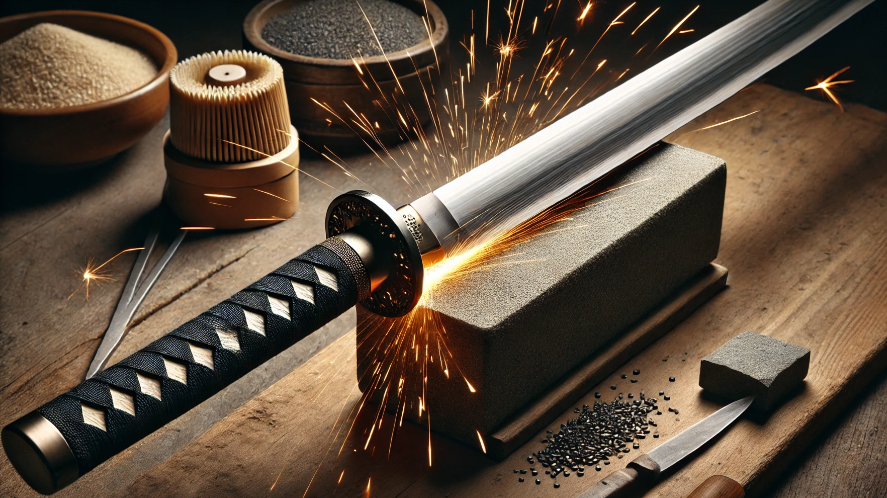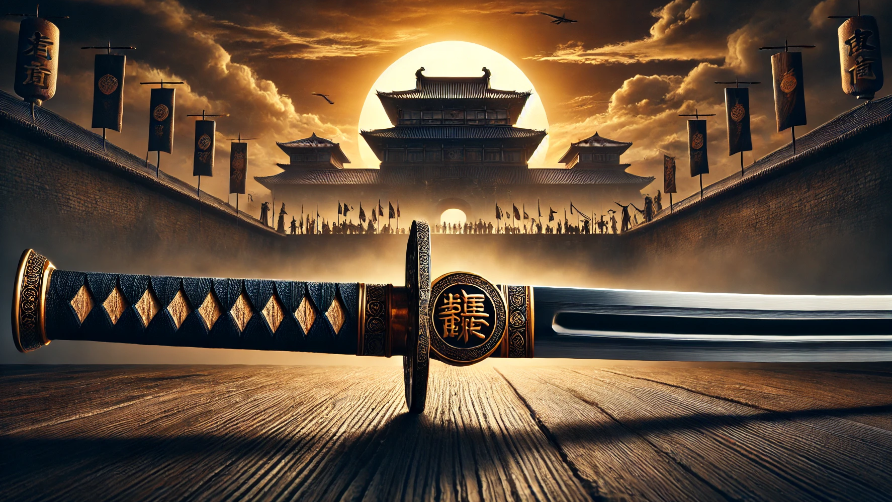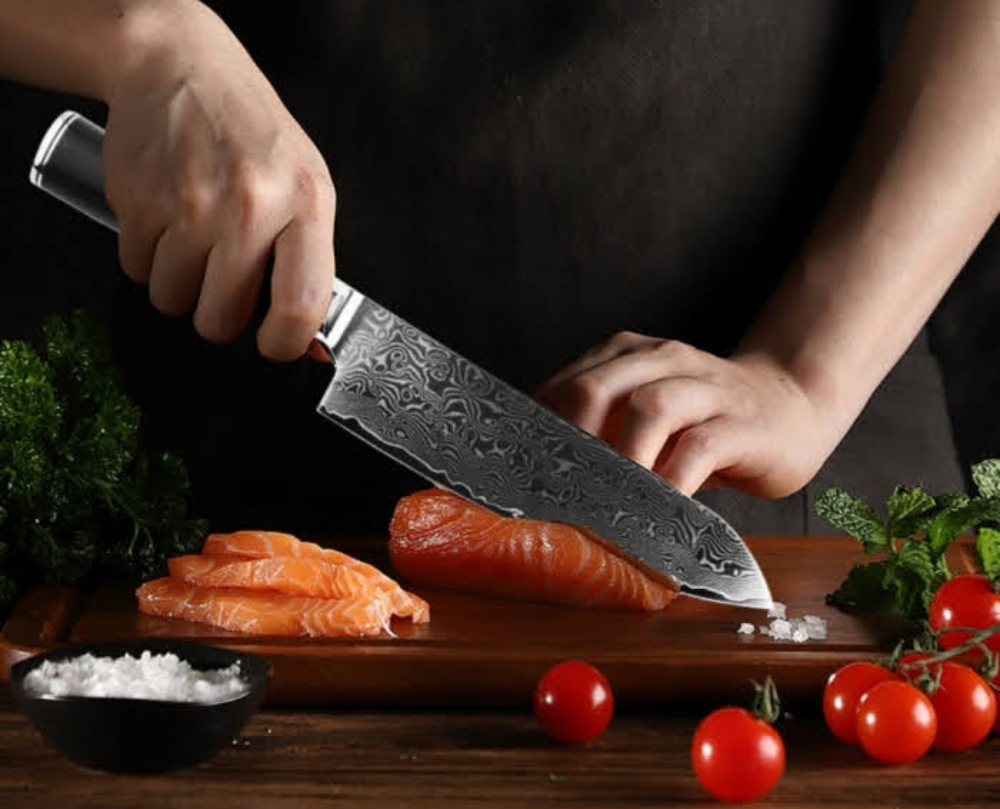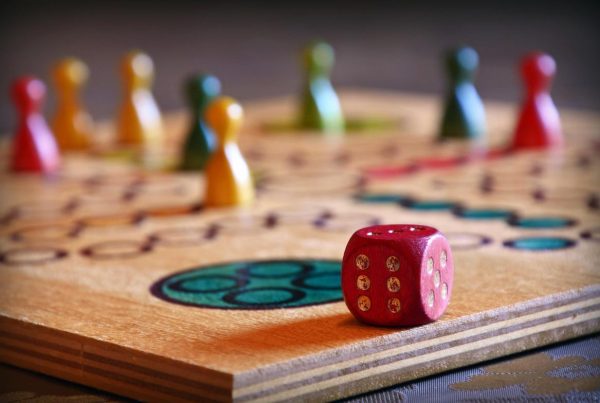Swords from Japan have been renowned artefacts for many centuries globally, appreciated for the craftsmanship, history and influence they have had on the Japanese and other people all over the world.
Still, over the years these master artisans have gone through some hardships which include decline in the population of samurais, and others impacts of the modern technology that they have to endure due to new challenges arising due to the ever-changing society. In the following sections, we shall examine the history of their decline and what the future might have in store for this vanished art form.

The Decline of the Samurai and Sword Demand
In Japan’s Meiji Restoration period of late 19th-century modernization and adoption of Western ideas and technologies, the samurai class was officially disbanded during Meiji Restoration – leading to rapid modernization with less need for swords as weapons in everyday life. Sword manufacturing industry also suffered during this time as demand decreased drastically as part of identity and military might of former samurais who once relied upon swords. With the introduction of firearms along with disbandment of Samurais as weapons almost completely disbanded at that time – leaving many makers in an industry struggling to surviving.
Post-World War II Developments
World War II’s aftermath marked another key development for Japanese sword makers. Under American occupation of Japan, strict regulations were enforced that included prohibiting sword ownership and destruction of many swords to counter any potential militaristic sentiment from returning after war had ended. Sword makers who relied heavily on producing blades now needed other avenues of income if they wanted to remain viable businesses.
Modernisation of Sword Making
Japanese swordsmiths must adapt to evolving times in order to continue crafting blades that remain relevant and in demand. While traditional techniques still hold great esteem, modern technologies have become more widespread – for instance some swordsmiths now employ electric furnaces instead of charcoal furnaces for melting steel; and in many instances modern steel alloys have replaced tamahagane as more cost-effective and consistent materials.

Preservation of Traditional Techniques
Sword makers and cultural historians alike have taken an interest in maintaining traditional Japanese sword making techniques since 1953 when Japan acknowledged this art form as part of their cultural heritage, and honored those able to demonstrate exceptional skill with sword crafting with titles like Living National Treasure or “Master Swordsmith of Japan.” Such individuals include Gassan Sadakazu and Osafune Tadayoshi who have played key roles in keeping this ancient art form alive today.
Economic Challenges Facing Japanese Sword Makers
Although Japanese swordmakers are culturally significant, many struggles financially in today’s market. Their industry is a niche one and their blades can often cost several thousand dollars each – this restricts potential buyers to collectors, martial artists, tourists and small customer pools like collectors or martial artists – leaving many swordsmiths with small, niche customer pools; mass production and cheaper mass-market alternatives have made it harder for smaller swordsmithing businesses to thrive and survive.
Sword making requires significant investments of time, labor and materials; each completed sword takes months to craft; therefore sword makers relying on clients who will pay premium prices must rely on steady clients willing to purchase Japanese swords internationally; however the market for Japanese swords remains relatively small in comparison with more mass-produced industries; as a result of financial pressures some traditional makers have expanded their work into producing other handcrafted metal items like knives or jewelry production.
Sword Making as an Art Form
Modern Japan has transformed swords from simply functional tools into exquisite works of art. Collectors and enthusiasts appreciate the aesthetic aspects of sword making–such as intricate patterns on blades, skillfully-crafted tsuba (guard), and detailed designs of Tsuka (handle). Swordsmiths have become artisans, with their work often displayed at galleries or museums.
Japanese culture and sword making are intrinsically intertwined, with many swordsmiths approaching their work with spiritual dedication, viewing it as a form of meditation. Forging requires patience, precision and attention to detail–qualities which resonate with Zen Buddhist philosophy in Japan. Such reverence for the craft has allowed it to become widely appreciated as both art form and a trade practice.
Notable Swordmakers and Swordsmiths
Despite the challenges affecting the industry, there remain several acclaimed sword makers who continue to practice traditional methods. These master swordsmiths – who practice in small scale forges – strive to create swords that interprets the Japanese tradition of sword making, and some of them such as the Yoshindo Yoshihara can be considered international level smiths. Modern day artists have not relented from experimenting in the field of sword making and creating functional as well as aesthetically pleasing swords.
Many swordsmiths have also taken on the responsibility of teaching young people the ancient craft of sword making, keeping tradition alive while adapting it to contemporary tastes. Through mentorship programs like this one, sword making traditions are both preserved and modernized to keep up with contemporary sensibilities.
Cultural Impact and Global Appeal of Japanese Swords
Japanese swords have long held international appeal beyond Japan’s borders, from Hollywood movies to anime; Japanese blades have become iconic symbols of martial arts, honor, and beauty – with movies like Kill Bill immortalising katanas for audiences around the globe through movies such as The Last Samurai driving up demand for genuine blades worldwide.
Conclusion
Collectors and enthusiasts from around the globe seek genuine Japanese blades in search of unique collectable pieces. Japanese swords have had a lasting influence on martial arts worldwide, such as kendo and iaido (the art of sword drawing). Both preserve techniques used to use katanas while simultaneously developing an appreciation of their craftsmanship.
Japanese Makoto Sword makers have faced many changes throughout history, from the decline of samurai warriors to industrialisation’s challenges, yet their tradition remains resilient.
While both economic and cultural hurdles persist, modern artisans committed to upholding traditional techniques have ensured that Japanese sword making remains an esteemed art form and recognized globally for its beauty and craftsmanship – continuing the legacy of master artisans for generations yet unborn.
You might also enjoy reading more in our home and leisure!




